5 Literacy Task posters and 1 Guide poster.
Print these posters out and display them in your classroom.
5 Literacy Tasks:
- Read to Self
- Work on Writing
- Read to Someone
- Word Work
- Listen to Reading
Updated: 21 May 2017
5 Literacy Task posters and 1 Guide poster.
Editable: Word
Non-Editable: PDF
Pages: 6 Pages
Years: 1 - 3
Read decodable and authentic texts using developing phonic knowledge, and monitor meaning using context and emerging grammatical knowledge
Read a range of texts using phonic, semantic and grammatical knowledge to read accurately and fluently, re-reading and self-correcting when required
Read different types of texts, integrating phonic, semantic and grammatical knowledge to read accurately and fluently, re-reading and self-correcting when needed
Use comprehension strategies such as visualising, predicting, connecting, summarising, monitoring and questioning to build literal and inferred meaning, and to connect and compare content from a variety of sources
Read decodable and authentic texts using developing phonic knowledge, and make and monitor meaning using context and emerging grammatical knowledge
Read different types of texts using phonic, semantic and grammatical knowledge to read accurately and fluently for meaning, re-reading and self-correcting when required
Read different types of texts, integrating phonic, semantic and grammatical knowledge to read accurately and fluently for meaning, re-reading and self-correcting when needed
Use comprehension strategies, such as visualising, predicting, connecting, summarising, monitoring and questioning, and connect and compare ideas from a variety of sources to build literal and inferred meanings
Communicates effectively by using interpersonal conventions and language with familiar peers and adults
Tracks written text from left to right and from top to bottom of the page and identifies visual and spatial features of print
Uses single-letter grapheme-phoneme correspondences and common digraphs to decode and encode words when reading and creating texts
Comprehends independently read texts using background knowledge, word knowledge and understanding of how sentences connect
Sustains independent reading with accuracy, automaticity, rate and prosody suited to purpose, audience and meaning
Reads and comprehends texts for wide purposes using knowledge of text structures and language, and by monitoring comprehension
Fluently reads and comprehends texts for wide purposes, analysing text structures and language, and by monitoring comprehension
Plans, creates and revises written texts for multiple purposes and audiences through selection of text features, sentence-level grammar, punctuation and word-level language
Analyses representations of ideas in literature through genre and theme that reflect perspective and context, argument and authority, and adapts these representations when creating texts
Read decodable and predictable texts, practising phrasing and fluency, and monitor meaning using concepts about print and emerging contextual, semantic, grammatical and phonic knowledgeElaborationsnavigating a text correctly, starting at the right pl...
Read an increasing range of different types of texts by combining contextual, semantic, grammatical and phonic knowledge, using text processing strategies, for example monitoring, predicting, confirming, rereading, reading on and self-correctingElabo...
Read different types of texts by combining contextual , semantic, grammatical and phonic knowledge using text processing strategies for example monitoring meaning, cross checking and reviewingElaborationsreading new and different kinds of texts with...
Select, navigate and read texts for a range of purposes, applying appropriate text processing strategies and interpreting structural features, for example table of contents, glossary, chapters, headings and subheadingsElaborationsbringing subject and...
Use comprehension strategies to interpret and analyse information and ideas, comparing content from a variety of textual sources including media and digital textsElaborationsmaking connections between the text and studentsâ own experience or oth...
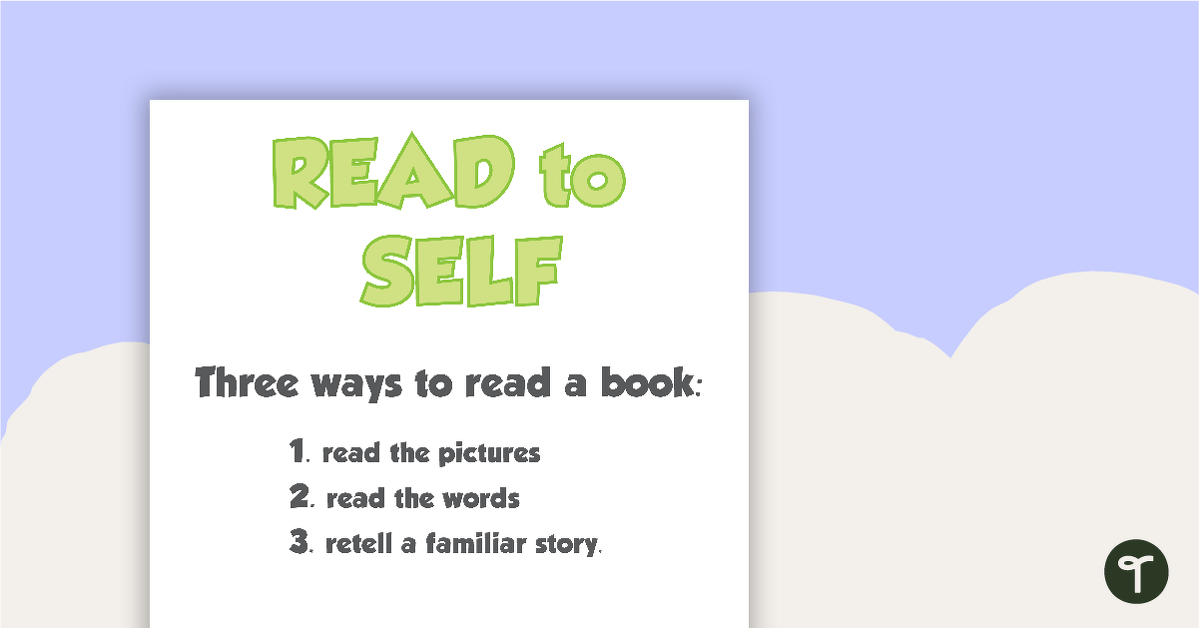
5 Literacy Task posters and 1 Guide poster.
Print these posters out and display them in your classroom.
5 Literacy Tasks:
Read decodable and authentic texts using developing phonic knowledge, and monitor meaning using context and emerging grammatical knowledge
Read a range of texts using phonic, semantic and grammatical knowledge to read accurately and fluently, re-reading and self-correcting when required
Read different types of texts, integrating phonic, semantic and grammatical knowledge to read accurately and fluently, re-reading and self-correcting when needed
Use comprehension strategies such as visualising, predicting, connecting, summarising, monitoring and questioning to build literal and inferred meaning, and to connect and compare content from a variety of sources
Read decodable and authentic texts using developing phonic knowledge, and make and monitor meaning using context and emerging grammatical knowledge
Read different types of texts using phonic, semantic and grammatical knowledge to read accurately and fluently for meaning, re-reading and self-correcting when required
Read different types of texts, integrating phonic, semantic and grammatical knowledge to read accurately and fluently for meaning, re-reading and self-correcting when needed
Use comprehension strategies, such as visualising, predicting, connecting, summarising, monitoring and questioning, and connect and compare ideas from a variety of sources to build literal and inferred meanings
Communicates effectively by using interpersonal conventions and language with familiar peers and adults
Tracks written text from left to right and from top to bottom of the page and identifies visual and spatial features of print
Uses single-letter grapheme-phoneme correspondences and common digraphs to decode and encode words when reading and creating texts
Comprehends independently read texts using background knowledge, word knowledge and understanding of how sentences connect
Sustains independent reading with accuracy, automaticity, rate and prosody suited to purpose, audience and meaning
Reads and comprehends texts for wide purposes using knowledge of text structures and language, and by monitoring comprehension
Fluently reads and comprehends texts for wide purposes, analysing text structures and language, and by monitoring comprehension
Plans, creates and revises written texts for multiple purposes and audiences through selection of text features, sentence-level grammar, punctuation and word-level language
Analyses representations of ideas in literature through genre and theme that reflect perspective and context, argument and authority, and adapts these representations when creating texts
Read decodable and predictable texts, practising phrasing and fluency, and monitor meaning using concepts about print and emerging contextual, semantic, grammatical and phonic knowledgeElaborationsnavigating a text correctly, starting at the right pl...
Read an increasing range of different types of texts by combining contextual, semantic, grammatical and phonic knowledge, using text processing strategies, for example monitoring, predicting, confirming, rereading, reading on and self-correctingElabo...
Read different types of texts by combining contextual , semantic, grammatical and phonic knowledge using text processing strategies for example monitoring meaning, cross checking and reviewingElaborationsreading new and different kinds of texts with...
Select, navigate and read texts for a range of purposes, applying appropriate text processing strategies and interpreting structural features, for example table of contents, glossary, chapters, headings and subheadingsElaborationsbringing subject and...
Use comprehension strategies to interpret and analyse information and ideas, comparing content from a variety of textual sources including media and digital textsElaborationsmaking connections between the text and studentsâ own experience or oth...

We create premium quality, downloadable teaching resources for primary/elementary school teachers that make classrooms buzz!
Write a review to help other teachers and parents like yourself. If you'd like to request a change to this resource, or report an error, select the corresponding tab above.
Would you like something changed or customised on this resource? While our team makes every effort to complete change suggestions, we can't guarantee that every change will be completed.
Did you spot an error on this resource? Please let us know and we will fix it shortly.
Are you having trouble downloading or viewing this resource? Please try the following steps:
If you are still having difficulty, please visit the Teach Starter Help Desk or contact us .

A fun game for students to play in small groups to consolidate their understanding of adjectives.
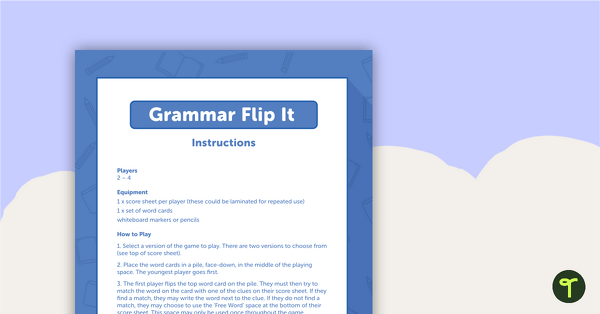
A fun game for students to play in small groups to consolidate their understanding of verbs.
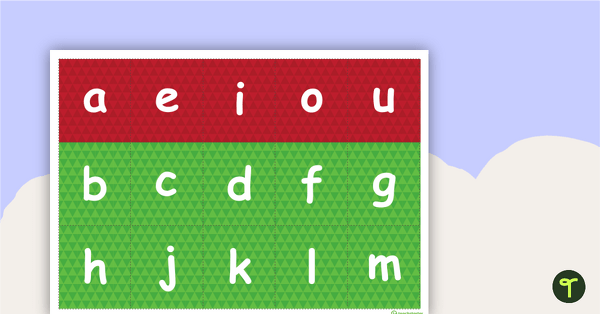
A sheet of letters to use when making CVC words.
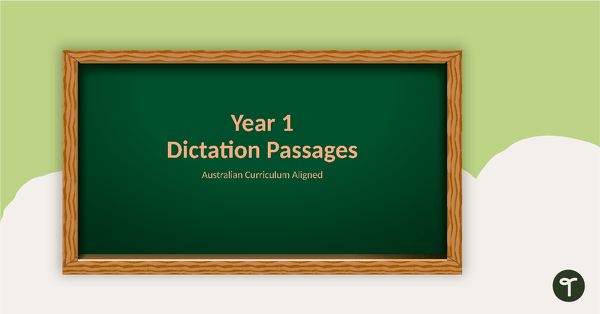
Use this set of Year 1 editing passages to help your students demonstrate their spelling, punctuation and grammar knowledge.
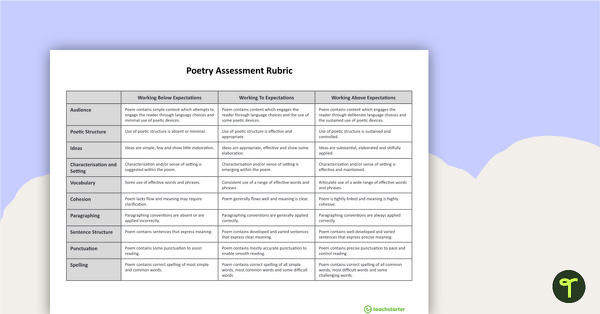
A NAPLAN-style rubric designed to help teachers to assess student's poetry.
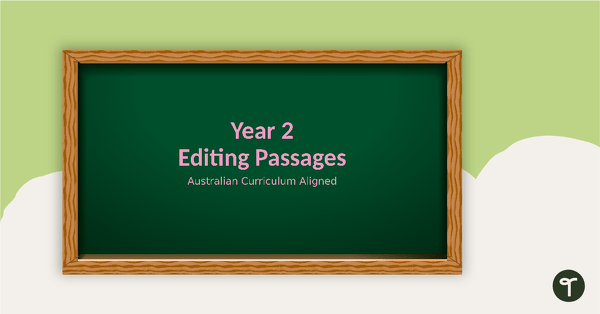
Use this set of Year 2 editing passages to help your students demonstrate their spelling, punctuation and grammar knowledge.
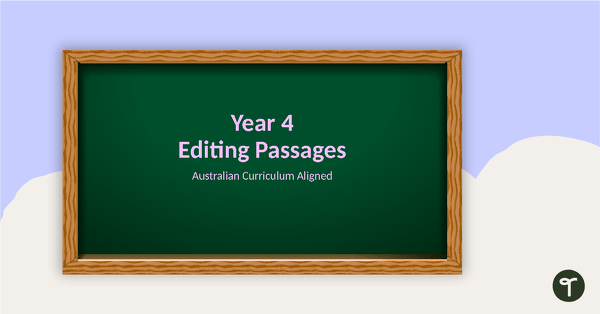
Use this set of Year 4 editing passages to help your students demonstrate their spelling, punctuation and grammar knowledge.

A set of 28 generic QAR question cards for students to use as a comprehension task after reading.
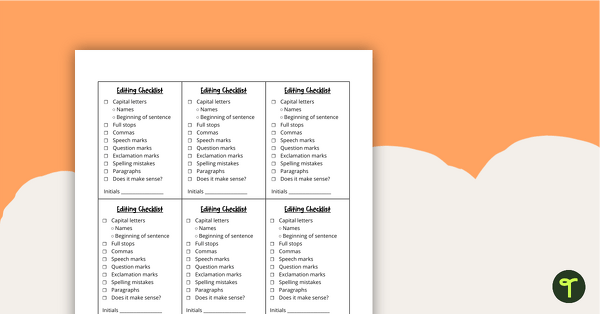
Get your students using this editing checklist so that no mistake gets left behind!
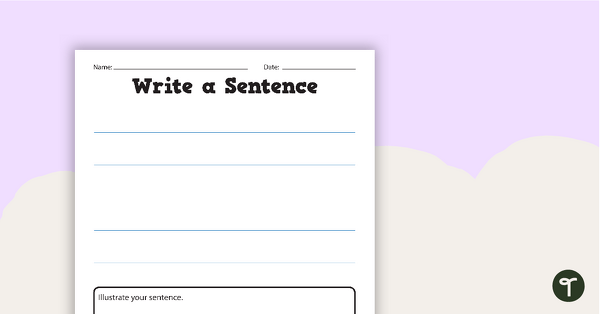
A worksheet for beginner writers to practice their handwriting.
Hi Guys, We have now updated this resource and created a Word Version so you can edit the text. You can now customize the wording to suit your needs in your classroom. Please let me know if you have any further questions, I'm more than happy to help. -Holly
Thanks for all the comments everyone! We're looking into updating this resource and creating a Word version so you can edit the text. As you can understand, we get a number of requests to create new resources, so I can't guarantee when it'll be finished. The good news is that we’ll soon be offering a way for Teacher and Ultimate Plan members to submit their requests and have them voted on by the Teach Starter community. Each month we will complete the most popular requests. Please let me know if you have any further questions, I’m more than happy to help. - Shanelle